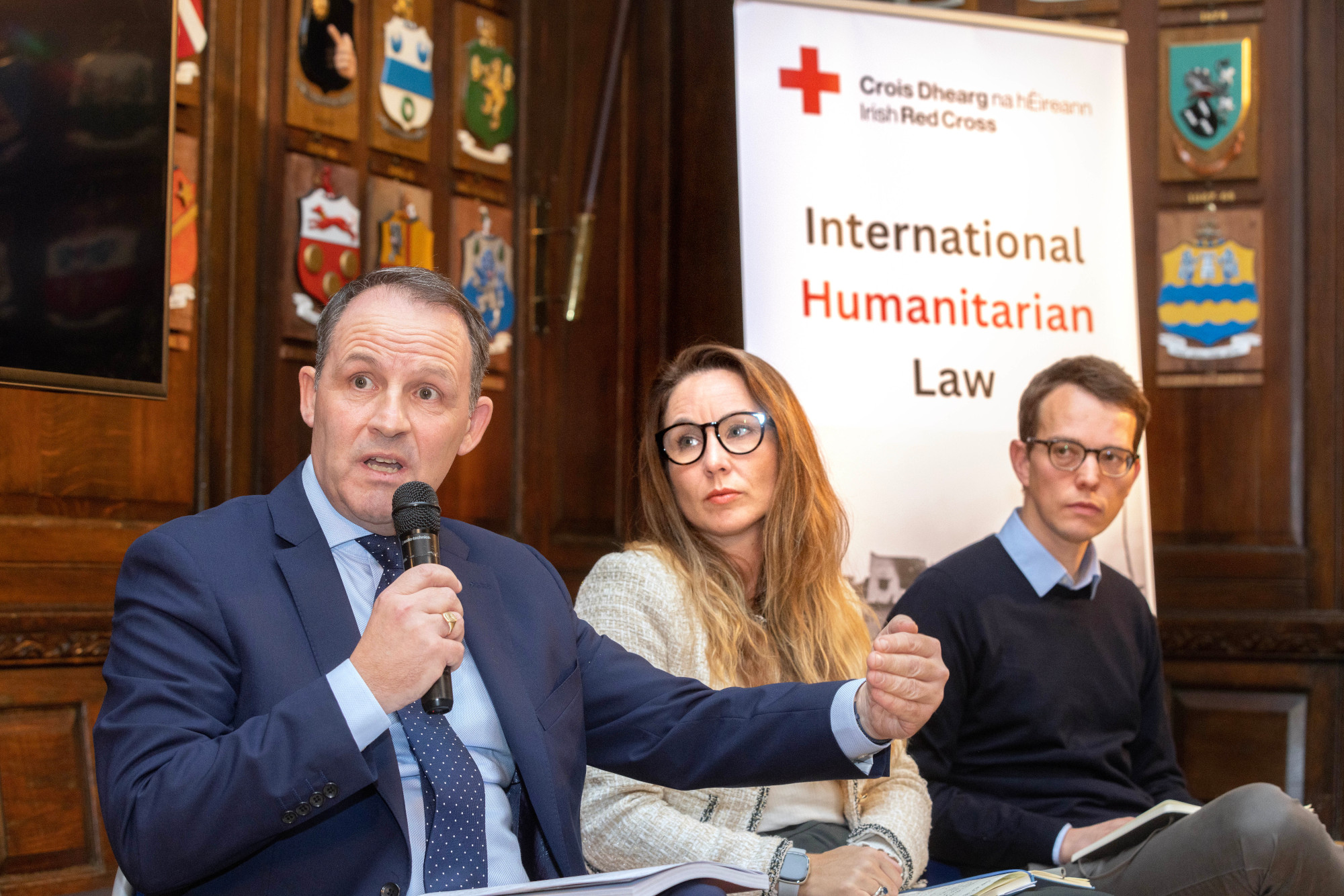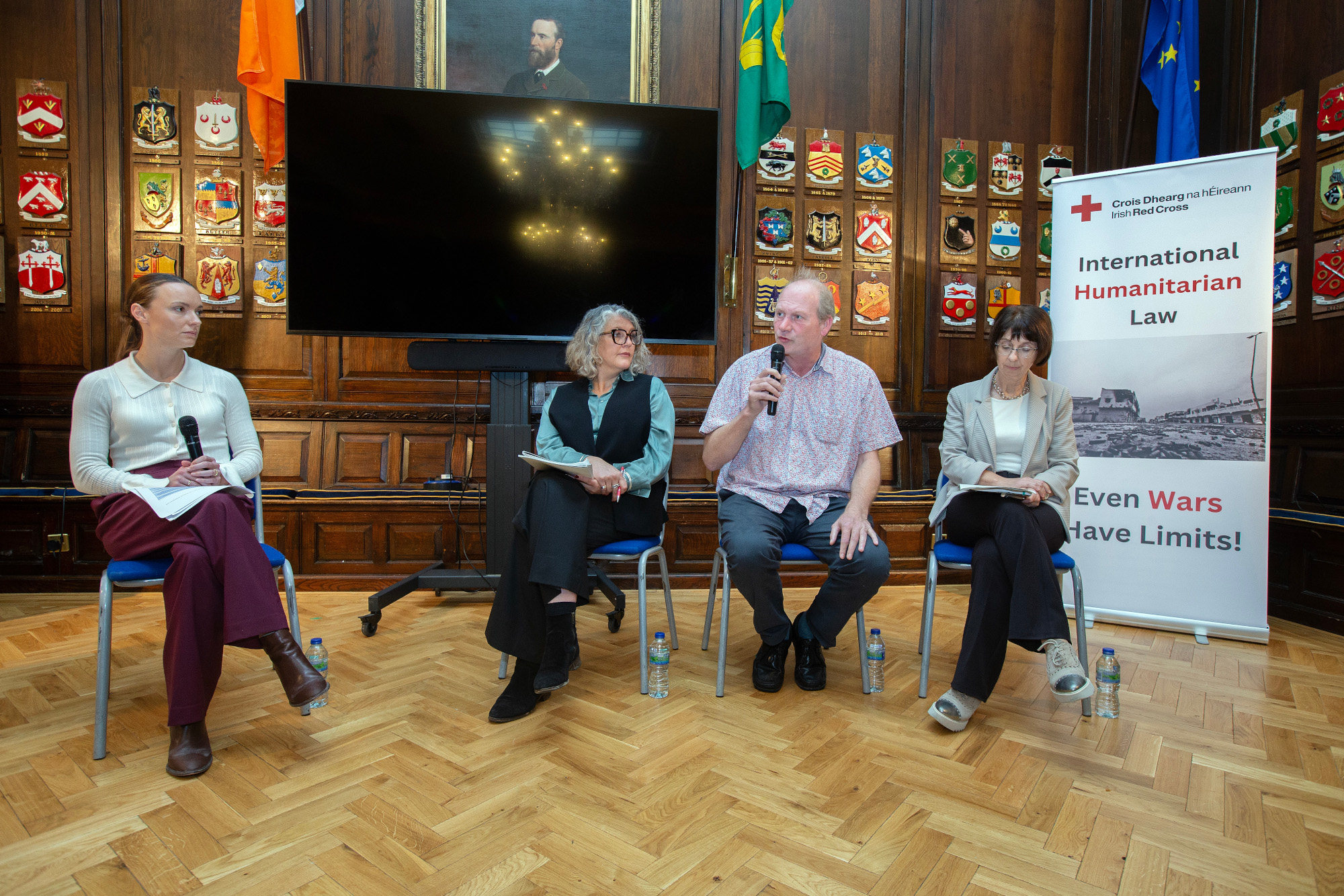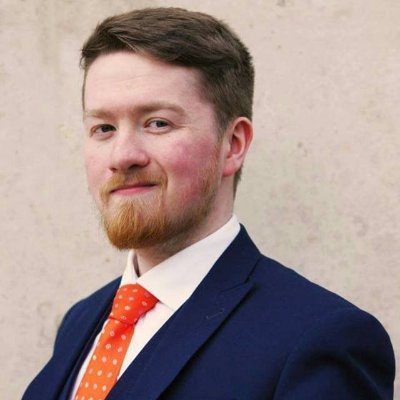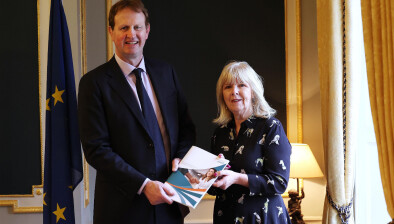International humanitarian law conference scrutinises urban conflict

Pictured (left–right): Lt Col Richard Brennan, Laura Boillot and Tobias Ehert at the Irish Red Cross International Humanitarian Law Conference 2023
The Irish Red Cross’ 2023 International Humanitarian Law (IHL) Conference ‘War in Cities: Exploring the devastating consequences of armed conflict in urban contexts’ was held on Tuesday 24 October in the Mansion House in Dublin.
Deirdre Garvey, secretary general of the Irish Red Cross, welcomed the speakers, and noted that the views expressed by the expert panel were theirs alone, and did not necessarily represent the views of the Red Cross.
The event was to hear remotely from Dina el-Mamoun, country director of the Centre for Civilians in Conflict (CIVIC) in Yemen. However, connectivity issues persisted, and it was remarked that for areas subject to urban conflict, many services will be affected.
Healthcare as ‘political football’
Michiel Hofman, a humanitarian specialist with Médecins Sans Frontières (MSF), noted how medics are needed in greater numbers in urban conflicts due to the greatly increased numbers of casualties, evidenced in Damascus, Khartoum and in Gaza.
“Whenever a hospital is bombed or shelled,” the reason often given by state actors is because “there are fighters in the hospital”, he noted. This can’t be a judgement call made by doctors — “simple medical ethics” require doctors to make medical assessments as to need, and to treat whoever requires treatment.
When actors claim that medics are then treating the enemy, Mr Hofman contends: “That’s why IHL was invented in the first place.”
Humanitarians face particular problems when supplies are cut off. In Sudan, government forces have prevented surgical supplies getting in since September. “This isn’t new,” having happened in Bosnia, Chechnya and elsewhere. However, if one looks at the last 20 years of conflict in places like Yemen, Syria, Afghanistan, Gaza, “health facilities themselves have become a political football”.
Mr Hofman said that he could understand why a military would not want the enemy to be treated, knowing that when they recover, they might continue their armed struggled against them. “I understand the raw emotions behind that,” and this is why medical services in particular have become so politicised.
Medical care was the only humanitarian service that all combatants could avail of: “We don’t build water pumps for barracks, we don’t build schools for soldiers.”
The cutting-off of supplies by one belligerent puts humanitarians in a difficult and dangerous situation: do they continue providing assistance only to one side, or in areas controlled by that side, trying to do what good they can because that’s the only place they have supplies? If they do that, will they be seen as partisan, and attacked? “Humanitarian assistance is used and abused.”
Mr Hofman decried the changing language and euphemism used, such as ‘safe places in Gaza’, asking where in one large urban environment those places are meant to be.
He also said that ‘collateral damage’ concepts can legitimise bombing a building with 500 people just because there might be one Hamas fighter in the basement. He opined that the language used to justify attacks on civilian targets where military targets might be present, of the civilians’ presence — in civilian environments — merely amounting to human shields was “absurd”.

Pictured (left–right): Guest speakers Réiseal Ní Chéilleachair, Michiel Hofman and Noreen Gumbo
Gender-based violence
Noreen Gumbo, Trócaire’s head of humanitarian programmes, told the conference that gender-based and sexual violence was becoming “increasingly accepted” within warfare, citing examples of Ukraine and the Democratic Republic of the Congo.
Women faced particular challenges because of lootings, door-to-door searches, and roadblocks. Leaving the relative safety of their homes, to flee to bomb shelters during air raids for instance, increased their vulnerability to such violence.
This vulnerability was enhanced in conflict in urban settings, where water and sanitisation are all provided by third parties, and when they are destroyed, women’s agency and protection can become “essentially dissolved”. Conflict destroying telecommunication services shut down the means by which women may be able to avail of some protection.
Ms Gumbo noted that “schools are one of the most protective structures” limiting the amount of early marriages that girls and young women are forced into. In the Tigray War in Ethiopia, schools were occupied by armed forces, which continued after the conflict subsided. Sometimes things happened in these schools which meant that the “image of a learning centre is completely destroyed”.
War increases the potency of gender-based stereotypes, “the root of all gender-based violence”. She reported that in addition to traditional humanitarian aid, “psychosocial first aid and psychoeducation” were essential.
Réiseal Ní Chéilleachair, Concern’s head of international advocacy, spoke on the major security concerns for humanitarians, particularly in settings like Mogadishu or Port-au-Prince, where it can be difficulty to assist those most in need. “Looting is a reality.” Ms Ní Chéilleachair noted that “humanity can be selective”, and ideas of who is deserving can align with who actors support politically.
Many aid providers are more comfortable in rural areas, where they can set up a camp and control it and its systems, whereas in cities their staff are under additional enormous pressures. The aid workers and their families are also likely to be affected. It was essential that the cycle of violence could be broken, she said, to limit its negative effects. She gave the example of Haiti, where 200,000 people have been displaced in the last six months. Many of these people have been moved into schools, stopping education in its tracks.
One attendee asked if non-state actors participating in urban conflict were more likely to breach humanitarian law on a more consistent basis, due to its pressures. Ms Gumbo thought it likely.
Ms Ní Chéilleachair spoke about non-state actors. Sometimes they acted more like gangs, such as in Haiti, where 40 doctors were abducted last year, and there are only a limited number of functioning hospitals.
“Young people are forced to perpetrate these crimes, or they will be killed,” she said. Sometimes they acted in a structured way, their behaviour more like a state. These actors will have a knowledge of IHL, and will be watching what states do, and how they interact with it.
When asked about the challenges of navigating these environments, Ms Gumbo replied that teams are trained in “emergency preparedness”.
Belligerents will often be the sons and fathers of civilians, so ensuring that civilians alone are given supplies is a difficult concept. Mr Hofman also said that while there is always an inherent voluntary acceptance of risk, even featuring in the MSF charter, “humanitarians are not martyrs” and there are limits. He gave the example of a surgical team in Gaza who had to be removed because of the very high threat to their lives.
When asked about the protection of cultural property in IHL, Mr Hofman said he “shed a tear” for the destruction of the Church of St Porphyrius, an orthodox church sheltering hundreds of people in Gaza which was attacked by the Israeli military. It survived 1,500 years “and now it is gone”.
Explosive weapons and urban warfare
Dr Philip Spoerri, an international lawyer and head of the delegation for UK and Ireland on the International Committee of the Red Cross, commended Ireland’s role in the negotiation of the ‘Political Declaration on the Use of Explosive Weapons in Populated Areas’, signed last year.
Conflict in urban settings did lead to more violations of IHL, he opined, where civilian and military assets are so intertwined. He mentioned the Red Cross publication Reducing Civilian Harm in Urban Warfare: A Commander’s Handbook was released in the last two years.
Tobias Ehret, senior adviser at the Norwegian Red Cross, spoke about the Red Cross and Red Crescent Movement’s humanitarian diplomacy efforts on urban warfare, and Laura Boillot, director of UK-based Article 36, spoke about the dangers of explosive weapons, which are “highly inappropriate” for areas where there is extensive civilian infrastructure that civilians rely on.
Ms Boillot also commended Ireland for its role in the Explosive Weapons Declaration signed by 83 countries, which surpassed expectations. She cautioned, however, that the declaration will only be useful if it is implemented.
Lt Colonel Richard Brennan BL of the Irish Defence Forces said IHL essentially entails a compromise between states. Noting there will be difference in interpretation, he said IHL has to be read broadly and the Irish Defence Forces considers interpretations from many different countries. Urban warfare is a fundamentally challenging space, and training is essential.
He recalled how the International Court of Justice ruled that the distinction between combatants and civilians, and the rules of military necessity and proportionality that followed were “intransgressible principles of international customary law” (Legality of the Threat or Use of Nuclear Weapons, Advisory Opinion of 8 July 1996 [1996] ICJ 3 [79]).
He also said that the jurisprudence of the International Criminal Tribunal for the former Yugoslavia (ICTY) was also instructive, remembering how the Gotovina case exhibited the difficulty assessing those concepts. Urban warfare, he said, “is a battle space that we would not call contemporary”. It has always been there, like in Stalingrad, Berlin and “even our own city”.








